February 19, 1863 – First Pipeline Attempt to link Oilfield to Refinery –
With teamsters dominating oil transportation in Pennsylvania, independent producer James L. Hutchings designed and constructed a pipeline to transport oil from a well on a farm at Oil Creek to a refinery 2.5 miles away. He had patented a rotary pump, which he used for moving the oil through two-inch piping from the Tarr Farm to the Humboldt Refinery at Oil City. His pumps worked, but the cast-iron pipeline proved impractical when the joints leaked.

The 1863 pipeline attempt began from an oil well on the Tarr Farm (above) north of Oil City, Pennsylvania. December 1861 photograph by John Mather courtesy Library of Congress.
Hutchings’ concept of driving fluids with a rotary pump brought a key innovation for pipeline construction. In 1865, Samuel Van Syckel would break the teamsters’ monopoly by constructing a wrought iron pipeline with threaded joints that could transport 2,000 barrels of oil a day more than five miles — the first practical oil pipeline.
“It kind of shows you how multiple failures lead to success,” noted pipeline engineer Claudia Farrell in 2002. “The idea of driving fluids with a rotary pump sparked an innovation in the pipeline industry.”
Learn more early petroleum transportation history by visiting the Drake Well Museum in Titusville.
February 20, 1959 – First LNG Tanker arrives in England
After a 27-day voyage from a processing facility just south of Lake Charles, Louisiana, the world’s first liquefied natural gas tanker arrived at Canvey Island in England’s Thames estuary, the world’s first LNG terminal. The experimental Methane Pioneer demonstrated that large quantities of LNG could be transported safely across the ocean.
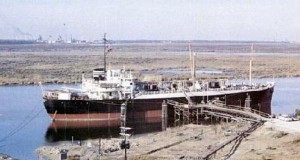
The world’s first liquefied natural gas tanker, the Methane Pioneer, was a converted World War II Liberty freighter.
The first-of-its-kind vessel, a converted World War II Liberty freighter, included five 7,000-barrel aluminum tanks supported by balsa wood and insulated with plywood and urethane. Owned by Comstock Liquid Methane Corporation, the 340-foot ship kept its methane cargo refrigerated to minus 285 degrees Fahrenheit. In June 1964, the first purpose-built commercial LNG carrier — the nine LNG tank, 618-foot Methane Princess — began regular delivery to the same Canvey Island port.
February 20, 1993 – Oil Pipe Saxophone Sculpture erected in Houston
Petroleum pipeline became a work of art when offbeat Texas sculptor Bob “Daddy-O” Wade debuted his blue, 70-foot saxophone at the opening of Billy Blues Bar & Grill on Houston’s west side.
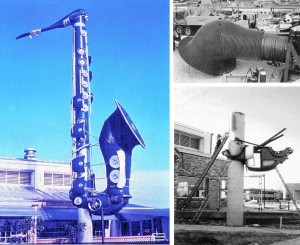
Petroleum pipeline segments contributed to a 1993 saxophone sculpture for Billy Blues Bar & Grill in Houston, Texas.
Wade transformed two 48-inch-wide pipes into the free-standing sculpture, adding an upside down Volkswagen, chrome hubcaps, beer kegs, and assorted parts to complete his blue creation. After much debate, the Houston City Council deemed the oilfield pipeline saxophone to be art rather than signage. The Fort Worth Star Telegram described Wade as a “connoisseur of Southwestern kitsch.”
Learn more in “Smokesax” Art has Pipeline Heart.
February 21, 1887 – Refining Process brings Riches to Rockefeller
Mining engineer and chemist Herman Frasch applied to patent a new process for eliminating sulfur from “skunk-bearing oils.” The former employee of Standard Oil of New Jersey was quickly rehired by John D. Rockefeller, who owned oilfields near Lima, Ohio, that produced a thick, sulfurous oil.
Standard Oil Company, which had accumulated a 40-million barrel stockpile of the inexpensive, sour “Lima oil,” bought Frasch’s patent for its copper-oxide refining process to “sweeten” the oil.
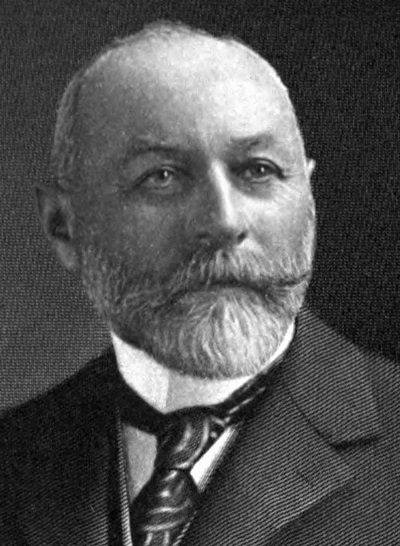
Herman Frasch (1851-1914), inventor of a key refinery process, later became known as the Sulfur King.
By the early 1890s, the Standard Oil’s giant Whiting oil refinery east of Chicago was producing odorless kerosene from desulfurized oil, making Rockefeller another fortune.
Paid in Standard Oil shares and becoming very wealthy, Frasch moved to Louisiana — where the chemist made yet another fortune. By 1911, he was known as the “Sulfur King” after inventing a method for extracting sulfur from underground deposits by injecting superheated water into wells.
February 22, 1923 – First Carbon Black Factory in Texas
Texas granted its first permit for a carbon black factory to J.W. Hassel & Associates in Stephens County. Scientists had discovered that carbon black greatly increased the durability of rubber used in tires. Produced by the controlled combustion of petroleum products, carbon black could be used in many rubber products.
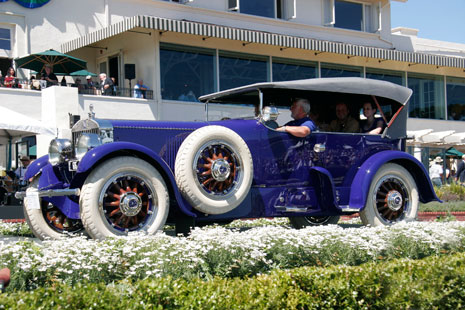
Early cars like the 1919 Pierce-Arrow had white rubber tires until B.F. Goodrich discovered carbon black improved durability. Photo courtesy Peter Valdes-Dapena.
Automobile tires were white until B.F. Goodrich Company in 1910 discovered that adding carbon black to the vulcanizing process improved strength and durability. An early Goodrich supplier was crayon manufacturer Binney & Smith Company (see Carbon Black and Oilfield Crayons).
February 23, 1906 – Flaming Kansas Gas Well makes Headlines
A small town in southeastern Kansas found itself making headlines when a natural gas well erupted into flames after a lightning strike. The 150-foot burning tower could be seen at night for 35 miles.
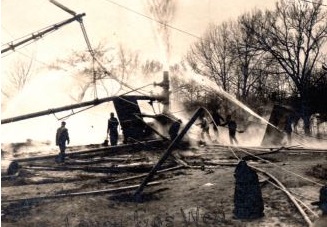
Kansas oilfield workers struggled to extinguish this 1906 well at Caney. Photo courtesy Jeff Spencer.
Drilled by the New York Oil and Gas Company, the well became a tourist attraction. Newspapers as far away as Los Angeles regularly updated their readers as technologies of the day struggled to extinguish the highly pressurized well, “which defied the ingenuity of man to subdue its roaring flames.”
A Denver publishing company sold postcards of the blazing Caney well, which took five weeks to smother using a specially designed and fabricated steel hood.
Learn more about Caney’s famed oilfield in Kansas Gas Well Fire.
February 23, 1942 – Japanese Submarine shells California Oil Refinery
Less than three months after the start of World War II, a Japanese submarine attacked a refinery and oilfield near Los Angeles. The shelling caused little damage but created the largest mass sighting of UFOs ever in American history.
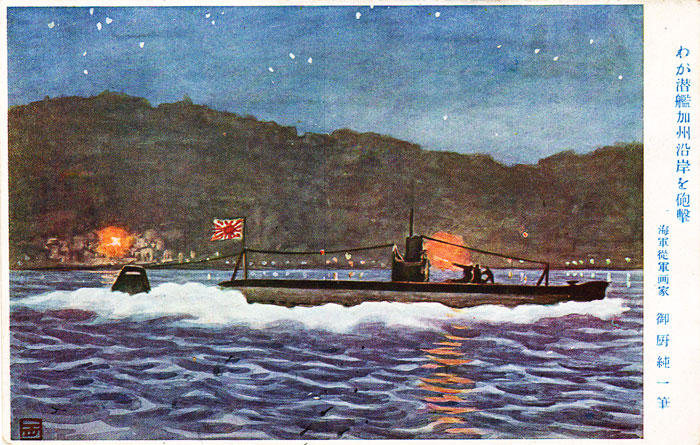
A rare Japanese postcard depicting the 1942 shelling of a California oil refinery by Imperial Navy submarine I-17. Image courtesy John Geoghegan.
Imperial Japanese Navy submarine I-17 fired armor-piercing shells at the Bankline Oil Company refinery in Ellwood City, California. The shelling north of Santa Barbara continued for 20 minutes before I-17 escaped into the night. The first Axis attack on the continental United States resulted in UFO sightings, mass hysteria and the “Battle of Los Angeles.”
Learn more in Japanese Sub attacks Oilfield.
February 24, 1938 – First Nylon Bristle Toothbrush
The Weco Products Company of Chicago, Illinois, “Dr. West’s Miracle-Tuft” toothbrush went on sale – the first to use synthetic nylon developed three years earlier by a former Harvard professor working at a DuPont research laboratory in New Jersey.
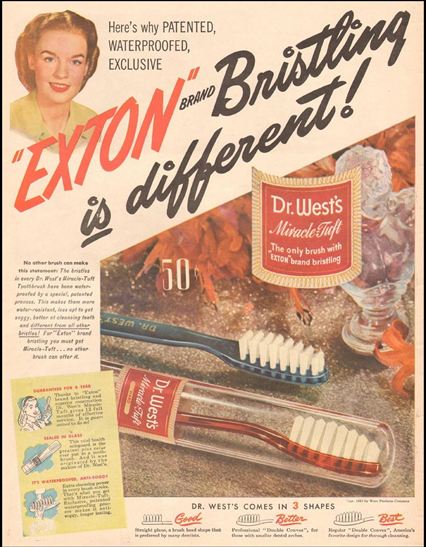
August 1938 Life magazine advertisement for first nylon bristle toothbrush.
“Until now, all good toothbrushes were made with animal bristles,” noted a 1938 Weco Products advertisement in Life magazine. “Today, Dr. West’s new Miracle-Tuft is a single exception. It is made with EXTON, a unique bristle-like filament developed by the great DuPont laboratories, and produced exclusively for Dr. West’s.”
Guaranteed for “no bristle shedding,” and selling for 50 cents ($10.61 in 2023 dollars), the toothbrush became the first commercial use of the DuPont petroleum product nylon.
February 25, 1897 – “Golden Rule” Jones elected
Samuel Jones, founder of an Ohio oilfield service company and inventor of an improved sucker rod, was elected mayor of Toledo on a progressive Republican ticket. The 40-year veteran of the Pennsylvania oilfields had become known as “Golden Rule” Jones of Ohio after posting the biblical admonition at his newly established Acme Sucker Rod Company in 1892. Jones introduced higher wages, paid vacations and bonuses while advocating the eight-hour workday. Reelected three times, Jones served as Toledo mayor until dying on the job in 1904.
February 25, 1918 – Pawnee Bill’s Oklahoma Oil Companies
As World War I neared its end, Gordon William “Pawnee Bill” Lillie entered the oil business in Yale, Oklahoma. Despite not being as famous as his Wyoming friend Col. William F. “Buffalo Bill” Cody, Lillie was a widely known showman and promoter of his state.
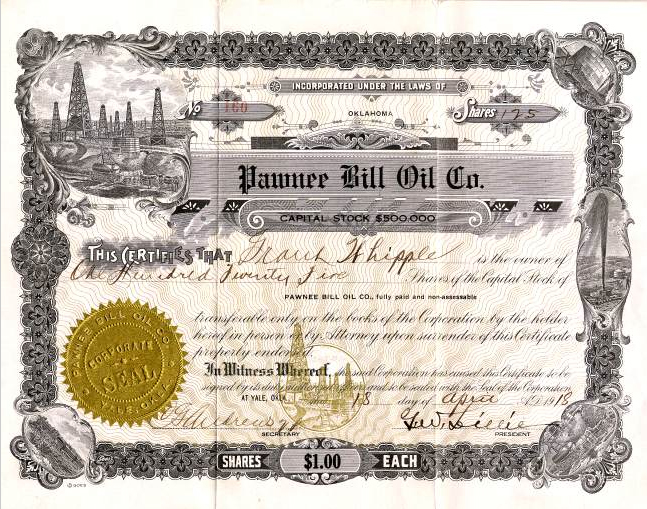
Although most are only family keepsakes, some old oil company certificates are valued by collectors.
The Pawnee Bill Oil Company operated a refinery in Yale, leasing 25 railroad tank cars during World War I. When the end of the war reduced demand for refined petroleum products, his company along with many Oklahoma refineries were soon operating at half capacity — or closed.
Although his oil company was still operating in March 1921, Pawnee Bill was forced to shut down his Yale refinery. His friend and fellow western showman Col. William Cody also tried his hand in the oil business. Cody’s Shoshone Oil Company had failed about a decade earlier in Wyoming.
February 25, 1919 – Oregon enacts First Gasoline Tax
Oil was selling for just $2 a barrel when Oregon enacted the one-cent gas tax to be used for road construction and maintenance. It was the first U.S. state to impose a gasoline tax. Less than two months later, Colorado and New Mexico followed Oregon’s example.
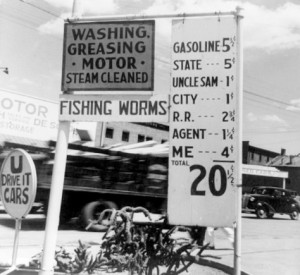
A circa 1930s service station owner explains why gas costs 20 cents a gallon in this Library of Congress photo.
By 1930, every state would add a gasoline tax of up to three cents per gallon. Faced with $2.1 billion federal deficit, President Herbert Hoover tacked on another one-cent per gallon federal excise tax in 1932.
According to the American Petroleum Institute (API), total state and federal gasoline taxes in January 2021 averaged 57.09 cents per gallon. The state-imposed tax varied from a low of 33.53 cents per gallon (Alaska) to a highs of 86.55 cents (California), 78 cents (Illinois) and 77.10 cents (Pennsylvania). The federal gasoline tax of 18.4 cents per gallon has not changed since 1993.
February 25, 1926 – Wyatt Earp’s California Oil Wells
A Kern County, California, oil well invested in by former lawman Wyatt Earp began producing 150 barrels of oil a day, confirming his belief in the field five miles north of Bakersfield. As early as 1901, drilling by the Shasta Oil Company had stirred local excitement, but the company went bust after three dry holes. In July 1924, Getty Oil Company began drilling on the Earp lease.
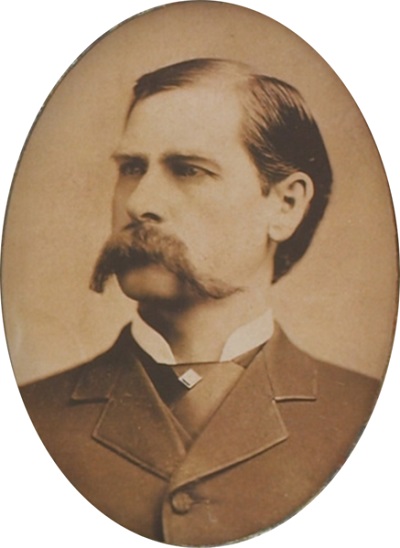
Wyatt Earp, circa 1887.
“Old Property Believed Worthless for Years West of Kern Field Relocated by Old-Timer,” declared the San Francisco Examiner, describing Earp, 75, as the “pioneer mining man of Tombstone.” The newspaper also reported, “Indications are that a great lake of oil lies beneath the surface in this territory.”
Working on his memoirs, Earp turned over management of his oil properties to his sister-in-law, and his wife noted, “I was in hopes they would bring in a two or three hundred barrel well. But I must be satisfied as it could have been a duster, too.”
Learn more in Wyatt Earp’s California Oil Wells.
_______________________
Recommended Reading: Petrolia: The Landscape of America’s First Oil Boom (2003); Natural Gas: Fuel for the 21st Century (2015); Daddy-O’s Book of Big-Ass Art (2020); Herman Frasch — The Sulphur King (2013); The B.F. Goodrich Story Of Creative Enterprise 1870-1952
(2010); Caney, Kansas: The Big Gas City
(1985); The Battle of Los Angeles, 1942: The Mystery Air Raid
(2010); Enough for One Lifetime: Wallace Carothers, Inventor of Nylon (2005); Pawnee Bill: A Biography of Major Gordon W. Lillie
(1958); Black Gold in California: The Story of California Petroleum Industry
(2016). Your Amazon purchases benefit the American Oil & Gas Historical Society; as an Amazon Associate, AOGHS earns a commission from qualifying purchases.
_______________________
The American Oil & Gas Historical Society (AOGHS) preserves U.S. petroleum history. Become an AOGHS annual supporting member and help maintain this energy education website and expand historical research. For more information, contact bawells@aoghs.org. Copyright © 2024 Bruce A. Wells. All rights reserved.


